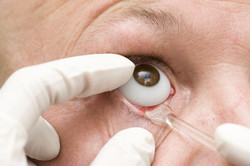New tool to assess visual acuity data from retinal prosthesis
Giving blind people sight again with a bionic eye has long been a major scientific aspiration. The implant aims to provide patients with visual information by electrically stimulating neurons in the retina. Several clinical trials have been conducted to test the safety and efficacy of visual prosthesis devices, demonstrating no safety concerns on their use. However, different procedures are followed each time, making comparison between different devices difficult. Researchers within VISUAL PROSTHESIS (Visual prosthesis: From clinical trials to the psychophysics lab and back) aimed to change that by developing a novel simulator tool assessing visual acuity data provided by vision tests. The simulator begins with a tiny digital camera mounted on the glasses, translates the images taken by the camera into data and sends them to a computer. The simulator software samples the image to match the resolution of the retinal prosthesis devices. It also blurs the image for more accurate perception of the patient's vision. Visual acuity tests are the principle quantitative measures used to assess the efficacy and cost effectiveness of ophthalmologic treatments and procedures designed to improve or restore vision. By using this novel simulator, researchers evaluated whether and under what conditions a measured visual acuity level is a true indication that the visual prosthesis provides a patterned image. Using the simulator at various blurring conditions, the team found that special eye charts such as Landolt C do not provide consistent visual acuity data. When the resolution is limited, the brain of sighted people can better integrate smooth, blurred information relative to distinct, square pixelated data. Head and eye movements help the brain acquire visual information from different locations and improve detectability. Researchers also explored how eye movements can influence retinal prosthesis. Results collected from two subjects demonstrated that it is much easier to locate a target using eye rather than head movements. Tests assessing the benefits of retinal prosthesis devices should focus on the usability of the device for everyday use. Researchers concluded that assessments need to focus on localisation tasks, which are the main benefit of the current retinal prosthesis.







